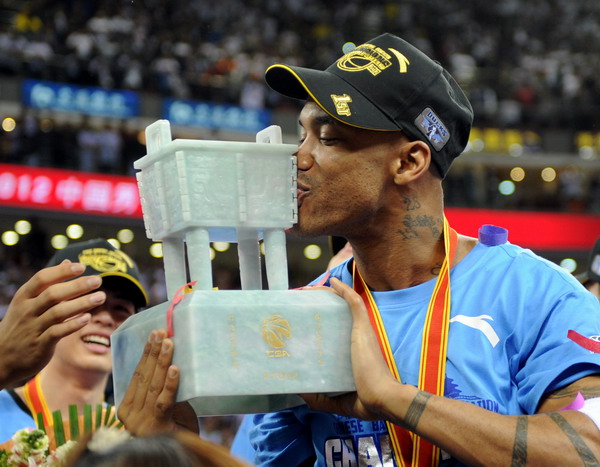The Magic Touch: Foreign Leagues Growing With NBA Players

During the past several years, NBA games have become much more competitive. An increasing number of NBA players have decided to join foreign leagues because of limited opportunities to play in games and higher salaries offered by clubs outside the United States. Underdeveloped but fast-growing basketball leagues in China, Turkey, and Russia, as well as mature leagues like those in Greece and Spain now regularly display former NBA players.
 |
| Turkish Basketball League |
Jordan Farmar who played for the Lakers from 2006 to 2010, Jordan Farmar decided to play for Maccabi Tel Aviv in 2011, in the wake of the 2011 NBA lockout, and then transferred to Anadolu Efes in 2012–13. During the two years in Israel and Turkey, Jordan averaged out at 14.8 points and 3.9 assists per game. Now he has returned to the Lakers for 2013-4.
Sasha Vujačić He went to Israel with his Laker teammate Jordan Farmar in 2011. He signed a two-year contract with Anadolu Efes. As a point guard, Sasha averaged 11.0 points per game.
However, for most basketball fans, the first time they became familiar with the TBL is when Allen Iverson joined the Beşiktaş in 2010. Although he only played ten games for the club, this striking news led many people to pay attention to the TBL.
Rated as one of the top three European national leagues, the Liga ACB is a high-level league similiar to NBA, and because of this, many former NBA players chose to join this league.
Spanish Basketball League (The Liga ACB)
 |
| Spanish Basketball League (Liga ACB) |
Andrés Nocioni played in the NBA from 2004-12 and as well as led the Argentine national team to win a gold medal at the 2004 Olympics in Athens. Last year, he signed with Caja Laboral after he was let go by Philadelphia 76ers. Interestingly, Andrés had already played for this club during 2001 to 2004. However this time when he returned to the Liga ACB, Andrés failed to play as well as he did in the NBA due to his injuries. He averaged 10.9 points and 4.0 rebounds per game on average.
Chris Quinn played for Miami Heats from 2006 to 2010, but after that he was cut by several teams. In November 2012, he joined the Spanish League club Valencia. One year later, he returned to the Cleveland Cavaliers for the rest of the 2012–13 NBA season.
 |
| Greek Basket League (GBL) |
Since Dominique Wilkins, the former NBA slam dunk contest winner signed with Panathinaikos of the Greek League in 1995. More than 100 NBA players have joined the GBL successively. Now, the most successful example is Acie Law, who is playing for Olympiacos Piraeus. With Olympiacos, Acie Law won the Euroleague 2012 and 2013 championships, and the 2011-12 Greek League championship.
Compared to these European leagues, the huge-potential Chinese Basketball Association has attracted the most NBA stars during the past several years, like Stephon Marbury, Tracy McGrady and J.R.Smith who have shined on Chinese courts.
As a former NBA All-Star, Stephon Marbury is widely acknowledged as the most outstanding and devoted international player in the CBA. In 2010, Stephon joined the CBA, but in order to win the CBA championship, he transferred to a stronger team, Beijing Ducks in 2011. After starting with a 13–0 record, Stephon and his team dominated the league in that season and finally won the championship. During the past season, he averaged 29.5 points and 5.3 assists per game, helping to lead the club to the second title. Currently, Stephon Marbury is in US for a surgery on his knee.

Stephon Marbury won his first championship in the CBA
During the 2012-13 season in the Shanghai Sharks, Gilbert Arenas joined the team. Despite high expectation as a former NBA All Star, Arenas played in only 14 games and started just 8 of them because of injury. Partially due to his poor performance, his team finished the last place and missed the playoffs.
These three are the most well-known players, but there are many talented former NBA players playing in the CBA now such as Quincy Douby, Von Wafer, Delonte West, and Marcus Williams. Most of them are averaging more than 25 points per game.
So why do so many NBA players choose to play in foreign leagues, especially in CBA?
I believe that there are three major reasons for it.
First, for some players, their salary is much lower in NBA compared with the higher one offered by other foreign leagues. For example, in China an increasing number of companies have invested in the fast-growing sports industry and are determined to invest more. In 2011-12 season, J. R. Smith just played approximately 30 games for his team but earned three million dollars.
Second, for many leagues, the length of a season is much shorter than that of the NBA, and low-level games are not as intensive as games in the NBA. A CBA season only lasts for four months, so players have more time to relax in the year.
Lastly, unlike several decades ago when NBA was the only league that people knew about, today more basketball leagues are well-known in the world, which attracts attention from the public and NBA players.
However, it is not a wise strategy for these upstart basketball leagues to solely rely on their better foreign players in order to achieve a better record. Rather, giving sufficient opportunities to players from the country where the league is based is necessary for further development of the leagues. These leagues can only achieve a healthy and prosperous development of their own leagues if domestic players are vital contributors.
Labels: Chinese Basketball Association, MPeng, NBA, Opinion, Original Content, The Magic Touch






